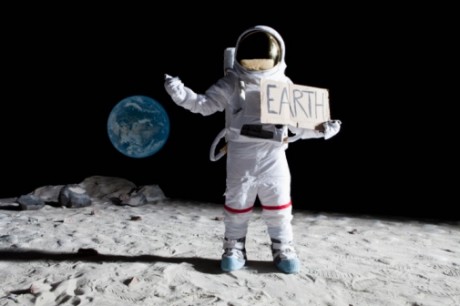

His (unconfirmed) explanation for the crash? An error in air traffic control. In 2013, new evidence emerged thanks to the investigative work of Alexei Leonov, a former cosmonaut who was troubled by the death of his friend and fellow space traveler. Lacking convincing explanations, conspiracy theories abounded – but none of them stuck. Immediately, the Soviets rushed to gloss over the incident, covering up details of the incident for decades.

Both Gagarin and flight instructor Vladimir Seryogin perished. Shortly thereafter, the plane crashed near the town of Kirzhach. In 1968, the famed pilot and cosmonaut took off on a routine training flight in a MiG-15UTI. He recommitted himself to flying, and even participated in aerospace engineering in hopes of helping to create a reusable spacecraft. Gagarin's good fortune held – the 1967 mission failed catastrophically when the landing module's parachute failed to open, ending with the first in-flight spacecraft fatality, Vladimir Komarov. Still, he trained for space, and was named a backup for the Soyuz 1 mission. Gagarin took to drinking heavily, which concerned his superiors. The air force promoted him multiple times, in large part to keep him out of airplanes and safely on the ground no one wanted their international superstar to die young. Once his publicity tour ended, he slowly returned to flying. Kennedy wanted no part of celebrating the Soviet Union's accomplishment, which cast the U.S. The celebrity cosmonaut visited dozens of countries in celebration of his incredible spaceflight – but he was barred from entering the United States. Keystone-France/Gamma-Keystone via Getty Images His safe return guaranteed worldwide celebrity. Sort of a hair-raising way to land."Įven before he landed, the Soviets were trumpeting the trailblazing spaceflight. "He jumped out of it and parachuted to the ground. "Gagarin did not land with his Vostok space capsule," says McCurdy. Instead, it was like something dreamed up by scriptwriters for a "Mission: Impossible" movie. Gagarin's return to Earth wasn't the tidy sort of splashdown that we're used to witnessing these days. Otherwise, he was just a passenger on the spacecraft." "According to sources at NASA, flight controllers gave Gagarin a key to the controls for use in an emergency, which he did not use. "Gagarin had no control over his spacecraft," says McCurdy. During the flight, he ate, drank and monitored the onboard systems. He reached a maximum height of 203 miles (327 kilometers). Gagarin orbited our planet just a single time (108 minutes). In 1961, very little was known about spaceflight and what would happen to a human who was in weightlessness for longer than a few seconds. The Soviets knew that their soon-to-be-famous cosmonaut would need to look good in front of a camera for propaganda purposes. His positive aura was a large part of why he was ultimately chosen for the Vostok 1 mission, just one week before launch. He was charismatic, competent and simply likable, in part because of the ever-present smile on his face. Though the process was competitive, Gagarin stood out both for his physical skills and his exceptional personality. Then began rigorous physical training, which included dozens of parachute jumps over water, oxygen starvation tests, and isolation chamber procedures meant to weed out anyone who might melt down psychologically in space. Gagarin checked both boxes, and he was one of the lucky candidates selected for further training. The commission specified that the men be between 25 and 30 years old and less than 5 feet, 7 inches (1.57 meters) tall. In 1960, Soviet authorities chose 20 men to take part in the country's fledgling space program.

In the meantime, he married Valentina Goryacheva, with whom he had two daughters. He joined the Soviet Air Force and became a full-fledged fighter pilot, gaining proficiency on planes like the MiG-15. Once he had his first taste of flight, he embraced his new passion and used his weekends learning to fly. Later, Gagarin attended various technical schools, but it was a flying club in Saratov that really grabbed his attention. Everyone suffered – two of his siblings wound up in labor camps but survived the war. When he was still a child, Nazi forces invaded the U.S.S.R. Born in 1934 in Klushino, near Moscow, Gagarin was the son of a carpenter and a milkmaid.


 0 kommentar(er)
0 kommentar(er)
